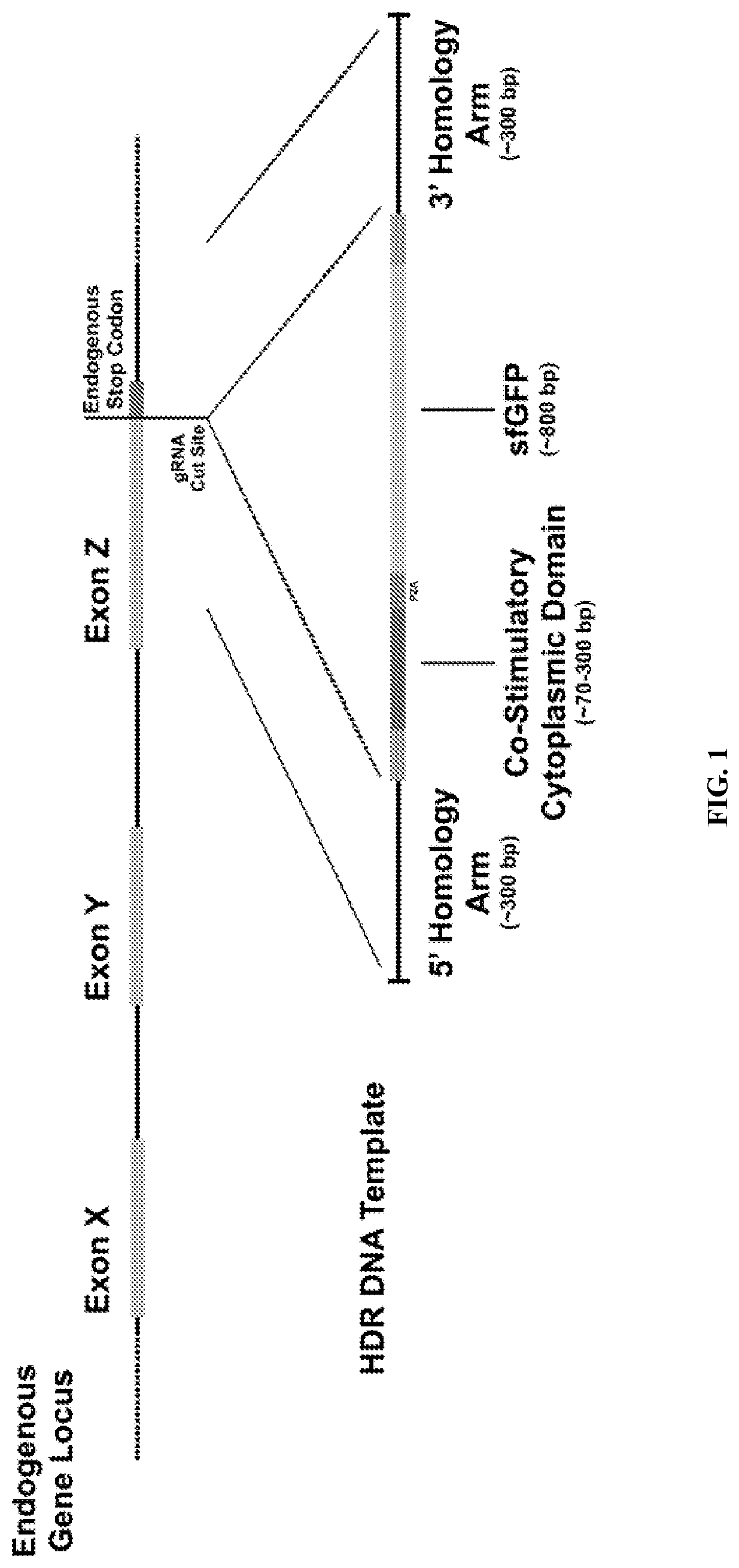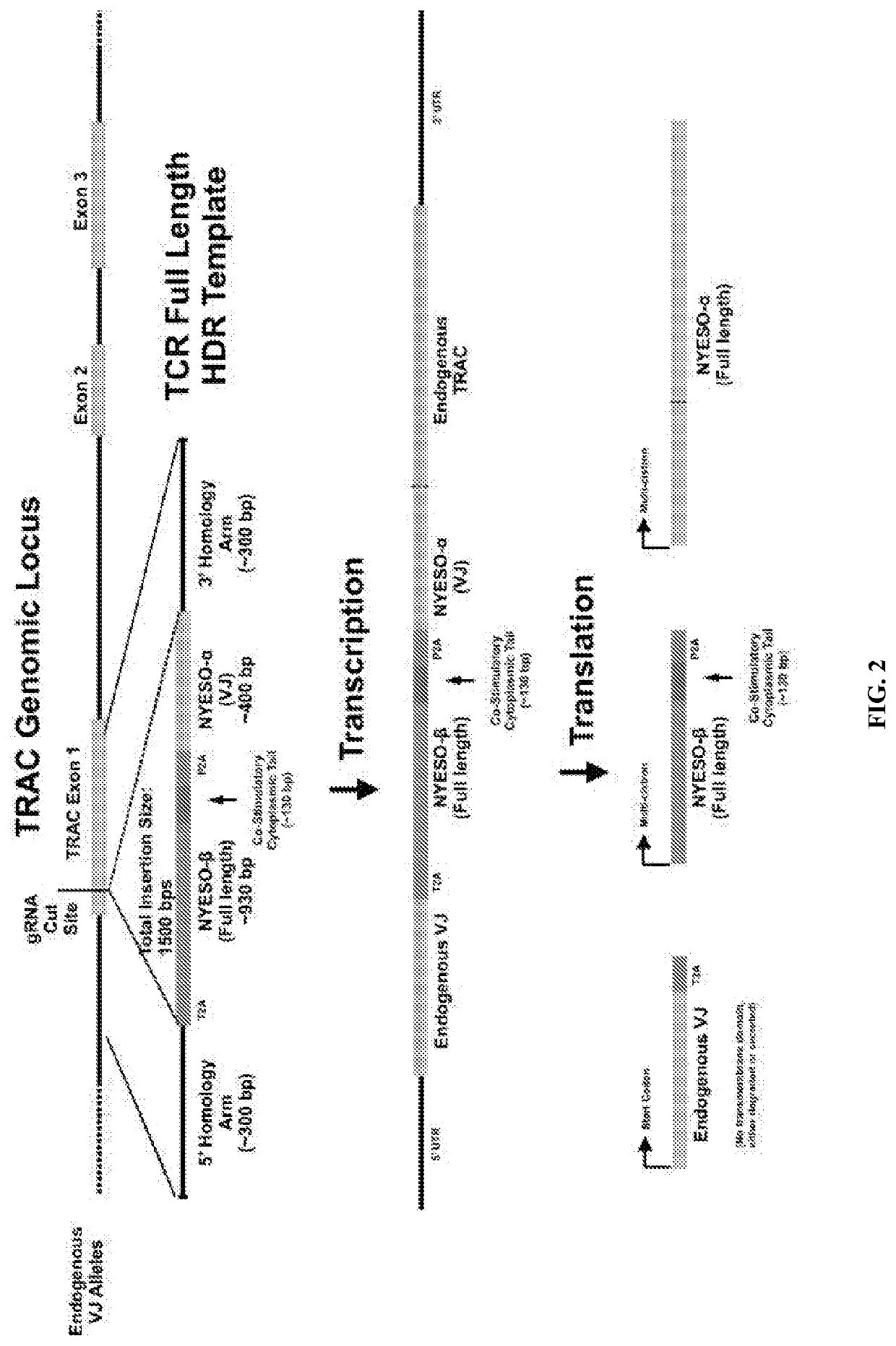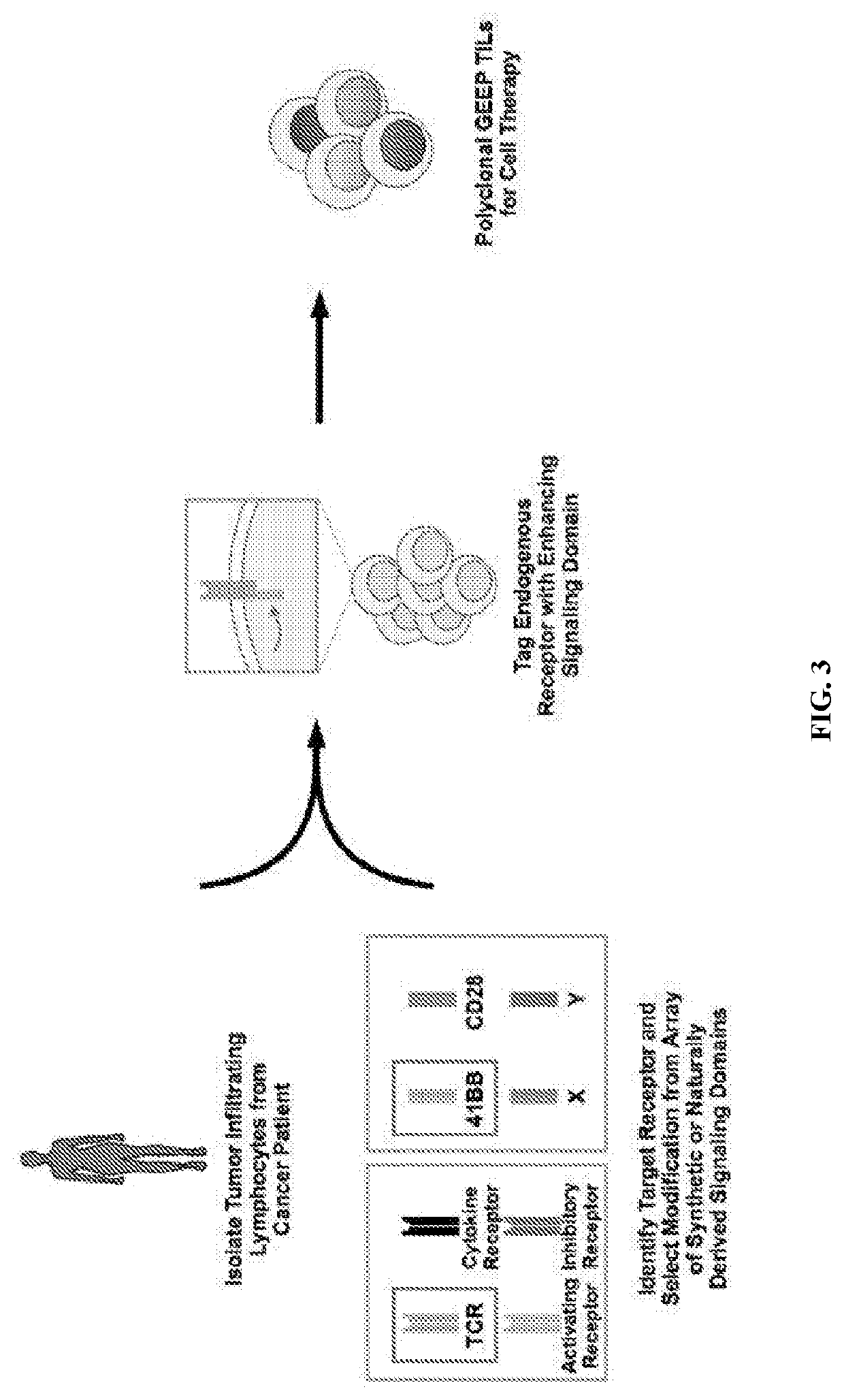Genetic engineering of endogenous proteins
a technology of endogenous proteins and gene engineering, applied in the field of gene engineering of endogenous proteins, can solve the problems of limited options for endogenous gene modifications, and achieve the effect of limiting side effects and enhancing favorable activity
- Summary
- Abstract
- Description
- Claims
- Application Information
AI Technical Summary
Benefits of technology
Problems solved by technology
Method used
Image
Examples
example 1
Isolation of Human Primary T Cells for Gene Targeting
[0164]Primary human T cells were isolated from healthy human donors either from fresh whole blood samples, residuals from leukoreduction chambers after Trima Apheresis (Blood Centers of the Pacific), or leukapheresis products (StemCell). Peripheral blood mononuclear cells (PBMCs) were isolated from whole blood samples by Ficoll centrifugation using SepMate tubes (STEMCELL, per manufacturer's instructions). T cells were isolated from PBMCs from all cell sources by magnetic negative selection using an EasySep Human T Cell Isolation Kit (STEMCELL, per manufacturer's instructions). Unless otherwise noted, isolated T cells were stimulated and used directly (fresh). When frozen cells were used, previously isolated T cells that had been frozen in Bambanker freezing medium (Bulldog Bio) per manufacturer's instructions were thawed, cultured in media without stimulation for 1 day, and then stimulated and handled as described for freshly iso...
example 2
[0178]Integration of a new viral promoter to the transcriptional start site of an endogenous gene creates a ‘promoter GEEP’ with a synthetic promoter driving expression of an endogenous gene product (FIG. 8b). Promoter GEEPs at IL2RA and PDCD1 showed continuing high expression of IL2RA and PD1 in resting cells 9 days after TCR stimulation, whereas the endogenous regulatory circuit for these activation-dependent genes showed low expression levels (FIG. 8b and FIG. 9). In contrast, integration of a new gene product at the same site creates a ‘product GEEP’ with an endogenous regulatory circuit driving expression of a new synthetic gene product (FIG. 8c). We created product GEEPs at the PDCD1 locus containing either a 2A peptide to maintain expression of the endogenous PD1 gene or a polyA sequence to remove endogenous PD1 gene expression (FIG. 8c and FIG. 10). Product GEEPs created at the IL2RA, CD28, and LAG3 loci all mirrored the expression dynamics of their respective endogenous gen...
PUM
| Property | Measurement | Unit |
|---|---|---|
| temperature | aaaaa | aaaaa |
| molecular weight | aaaaa | aaaaa |
| molecular weight | aaaaa | aaaaa |
Abstract
Description
Claims
Application Information
 Login to View More
Login to View More - R&D
- Intellectual Property
- Life Sciences
- Materials
- Tech Scout
- Unparalleled Data Quality
- Higher Quality Content
- 60% Fewer Hallucinations
Browse by: Latest US Patents, China's latest patents, Technical Efficacy Thesaurus, Application Domain, Technology Topic, Popular Technical Reports.
© 2025 PatSnap. All rights reserved.Legal|Privacy policy|Modern Slavery Act Transparency Statement|Sitemap|About US| Contact US: help@patsnap.com



